Archaeological Site Along The Nile Reveals The Nubian Civilization That Flourished In Ancient Sudan
AncientPages.com - Circular mounds of rocks dot the desert landscape at the archaeological site of Tombos in northern Sudan. They reveal tumuli—the underground burial tombs used at least as far back as 2500 B.C. by ancient inhabitants who called this region Kush or Nubia. As a bioarchaeologist who excavates and analyzes human skeletal remains along with their related grave goods, I've been working at Tombos for more than 20 years.
Along its length, the Nile has six cataracts – rocky places with shallow, fast moving water. Tombos is at the Third Cataract. Credit: Michele R. Buzon, CC BY-ND
Discussions about ancient history in Africa are dominated by the rise of Egypt. But there were several societies that rose to great power in the Nile River Valley since the middle of the third millennium B.C., including this often overshadowed neighbor to Egypt's south. Even though ancient Kush rivaled and, at times, conquered Egypt, there's been a relative lack of modern attention paid to this civilization. Early 20th century research expanded scholars' understandings of ancient Kush, but the interpretations had colonial and racist biases that often obscured this civilization's strengths and achievements.
I'm co-director, with Stuart Tyson Smith, of the excavations at Tombos. These burials tell our archaeological team about many aspects of life and death in this place millennia ago. Just like those living along the Nile River today, ancient people dealt with various challenges including environmental changes, sociopolitical transitions and interactions with other groups. Equally important to our discoveries about the past is sharing our findings with the local community and supporting Sudanese who want to pursue archaeology careers.
Illuminating life and death at Tombos
The remains of the ancient inhabitants of Tombos reveal information about their physical activity, as well as infection and nutrition. Conditions such as heart disease, cancer and the effects of hard labor all leave marks on the human body that provide insights into the epidemiology of disease in the past. They help us trace the factors that play a role in health conditions and their social context. For example, we've found the remains of an adult woman and child who lived with a growth disorder, which shows that people with physical differences were incorporated into society.
By analyzing the isotopes, or forms of chemical elements, incorporated into inhabitants' teeth, we're able to piece together where they may have lived during childhood.
As the team uncovers what lies beneath the ground, we learn about individual ancient community members. For instance, we've found the remains of an older woman who lived into her 60s and experienced arthritis, a younger woman whose burial included a baby, and a middle-aged woman with a basket full of whole and broken small figurines, beads and other items. Discovering people who apparently lived different kinds of lives lets our team create a picture of who populated Tombos when it was thriving.
The tomb structures show us how people wanted to represent themselves and their families publicly after death. We can link body position and the artifacts accompanying the burials to different cultural and religious practices. One well-provisioned burial of a middle-aged man included both a bed and coffin, combining traditional Nubian and Egyptian practices. The tomb also contained bronze bowls, a decorated wooden box, a pile of amulets that were treated as magical objects and a cache of iron weapons, which demonstrate early iron use in Nubia.
We've found that when Egyptians ruled Nubians during the New Kingdom empire around 1200 B.C., some immigrant Egyptians and local people selected Egyptian-style pyramid and chamber tombs for their burials. At the same time, some people at Tombos also used the local tumulus tomb structure similar to earlier graves in Nubia, showing how much people varied in their choices about burial.
Involving today's inhabitants with finds from the past
Our archaeological team's ability to successfully build a picture of people from the past relies on active and close engagement with the local community. Our interactions with town residents—through archaeological work, casual conversations over tea and formal presentations of our findings—have shown us that they are proud of the region's ancient people and wish for themselves and others to know more about them.
A recent lecture and discussion that my Sudanese colleague, Remah Abdelrahim Kabashi Ahmed, and I held for the women of Tombos showed us how curious they are about the past as well as the present. Remah, who is training in bioarchaeology, and I answered questions such as: What kind of medicine did people use then? How old was the baby at death? Why did people put a bed and jewelry in their tomb? They notice the use of beds in ancient burials that look similar to those carved in recent times. They ask if we as women find the work physically difficult.
Importantly, they tell us that they want more presentations because their male family members who work at the archaeological site with us don't share with them what we've found. As a result, we've expanded our outreach in many ways, including by collaborating with the local schools to produce some teaching materials about archaeology, local history and Tombos site findings. We also hosted a teacher and her students on a tour of the site to see our open excavations.
Members of the research team looking for subterranean structures. Credit: Stuart Tyson Smith, CC BY-ND
We work closely with the Sudanese administrative body that oversees archaeological research, the National Corporation for Antiquities and Museums. But this is not enough. It's important for foreign researchers to study the past in collaboration with partners from the community and Sudanese academic colleagues. These partnerships are vital steps in working together to create new knowledge about the region's ancient history and improve upon the exclusionary and racist perspectives of earlier researchers.
Tombos team member Mohamed Faroug Ali, a Sudanese archaeologist at International University of Africa in Khartoum, led the creation of the American Sudanese Archaeological Research Center, with the goal of encouraging international research and collaboration in Sudan. We've run virtual lectures and provided scholarships for Sudanese students pursuing degrees in archaeology. We're working toward developing a degree program at the International University of Africa.
Our goal is to support training Sudanese so local people—with more direct connections to the ancient civilization we're studying—can participate in these archaeological projects at all levels. Promoting and practicing ethical research that includes the people who live in the area today is as important to the Tombos team as learning more about the lives of the ancient inhabitants.
Written by Michele R. Buzon - Professor of Anthropology, Purdue University
This article is republished from The Conversation under a Creative Commons license. Read the original article.![]()
More From Ancient Pages
-
 Is There A Hidden Ancient Message Inside San Miniato Al Monte Basilica?
Featured Stories | Oct 3, 2022
Is There A Hidden Ancient Message Inside San Miniato Al Monte Basilica?
Featured Stories | Oct 3, 2022 -
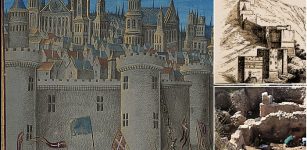 Late Roman-Era Rooms, Offering Vessels Unearthed At Ancient City Of Antiocheia, Southern Türkiye
Archaeology | Oct 31, 2022
Late Roman-Era Rooms, Offering Vessels Unearthed At Ancient City Of Antiocheia, Southern Türkiye
Archaeology | Oct 31, 2022 -
 Mystery Of Arthur’s Stone In UK – Solved?
Archaeology | Aug 11, 2021
Mystery Of Arthur’s Stone In UK – Solved?
Archaeology | Aug 11, 2021 -
 Strange Ancient Accounts Of Fourth Dimensional Phenomena
Ancient Mysteries | Jun 7, 2018
Strange Ancient Accounts Of Fourth Dimensional Phenomena
Ancient Mysteries | Jun 7, 2018 -
 Erik The Red: Famous Viking Outlaw Who Colonized Greenland And Was Father Of Leif Erikson
Vikings | Jun 16, 2020
Erik The Red: Famous Viking Outlaw Who Colonized Greenland And Was Father Of Leif Erikson
Vikings | Jun 16, 2020 -
 Rare 2,800-Year-Old Assyrian Scarab Amulet Found In Lower Galilee
Archaeology | Feb 24, 2024
Rare 2,800-Year-Old Assyrian Scarab Amulet Found In Lower Galilee
Archaeology | Feb 24, 2024 -
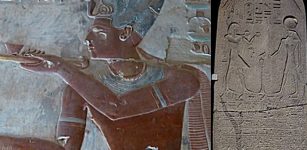 Egyptian King Seti I Documented His 3300-Year-Old Accomplishment On Triumphal Stele
Archaeology | Feb 27, 2023
Egyptian King Seti I Documented His 3300-Year-Old Accomplishment On Triumphal Stele
Archaeology | Feb 27, 2023 -
 Why Have So Few Who Have Seen This Mysterious Victorian-Era Entity Survived?
Featured Stories | Sep 8, 2024
Why Have So Few Who Have Seen This Mysterious Victorian-Era Entity Survived?
Featured Stories | Sep 8, 2024 -
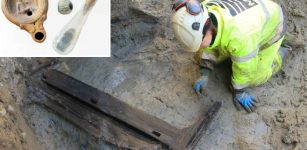 First Complete Roman Funerary Bed Found In Britain
Archaeology | Feb 19, 2024
First Complete Roman Funerary Bed Found In Britain
Archaeology | Feb 19, 2024 -
 Moses’ Secret Knowledge Of Superior And Forbidden Technology – Alien Intervention And Events Erased From Historical Records – Part 2
Ancient Mysteries | Sep 24, 2020
Moses’ Secret Knowledge Of Superior And Forbidden Technology – Alien Intervention And Events Erased From Historical Records – Part 2
Ancient Mysteries | Sep 24, 2020 -
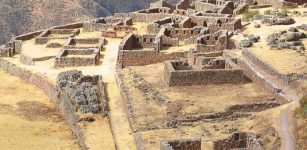 Beautiful Ancient City Of Pisac In The Sacred Valley, Peru – Incredible Inca Ruins
Featured Stories | Jun 22, 2017
Beautiful Ancient City Of Pisac In The Sacred Valley, Peru – Incredible Inca Ruins
Featured Stories | Jun 22, 2017 -
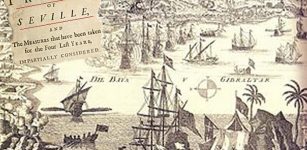 On This Day In History: Treaty Of Seville Signed – On Nov 9, 1729
News | Nov 9, 2016
On This Day In History: Treaty Of Seville Signed – On Nov 9, 1729
News | Nov 9, 2016 -
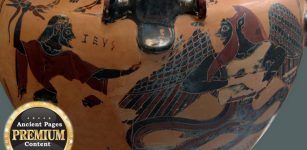 Mysterious Shape-Shifting Beings In Ancient Greece
Ancient Mysteries | Nov 12, 2014
Mysterious Shape-Shifting Beings In Ancient Greece
Ancient Mysteries | Nov 12, 2014 -
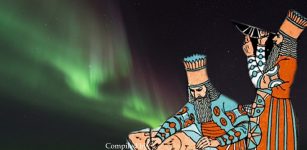 Evidence Of Unusual Solar Activity Discovered On Ancient Cuneiform Tablets
Archaeology | Oct 16, 2019
Evidence Of Unusual Solar Activity Discovered On Ancient Cuneiform Tablets
Archaeology | Oct 16, 2019 -
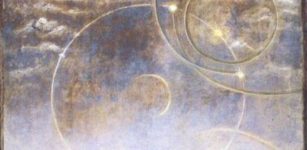 On This Day In History: Vädersol Painting Depicting ‘Sun Dog’ Phenomenon Observed Over Stockholm – On Apr 20, 1535
News | Apr 20, 2017
On This Day In History: Vädersol Painting Depicting ‘Sun Dog’ Phenomenon Observed Over Stockholm – On Apr 20, 1535
News | Apr 20, 2017 -
 On This Day In History: King Louis XVI Of France Was Put On Trial For Treason – On Dec 11, 1792
News | Dec 11, 2016
On This Day In History: King Louis XVI Of France Was Put On Trial For Treason – On Dec 11, 1792
News | Dec 11, 2016 -
 USC Archeologist Discovers Maya Royal Burial Site
Archaeology | Jan 9, 2016
USC Archeologist Discovers Maya Royal Burial Site
Archaeology | Jan 9, 2016 -
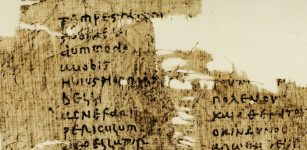 Scientists Unravel Secrets From Ancient Latin Papyrus And Shed New Light On The Roman World
News | Jan 11, 2023
Scientists Unravel Secrets From Ancient Latin Papyrus And Shed New Light On The Roman World
News | Jan 11, 2023 -
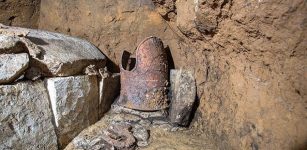 1,500-Year-Old Tunnel Tomb With Human Remains And Artifacts Accidentally Unearthed In Japan
Archaeology | Feb 23, 2018
1,500-Year-Old Tunnel Tomb With Human Remains And Artifacts Accidentally Unearthed In Japan
Archaeology | Feb 23, 2018 -
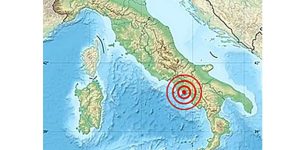 On This Day In History: Earthquake In Pompeii, Italy Occurred – On Feb 5, 62 AD
News | Feb 5, 2017
On This Day In History: Earthquake In Pompeii, Italy Occurred – On Feb 5, 62 AD
News | Feb 5, 2017


